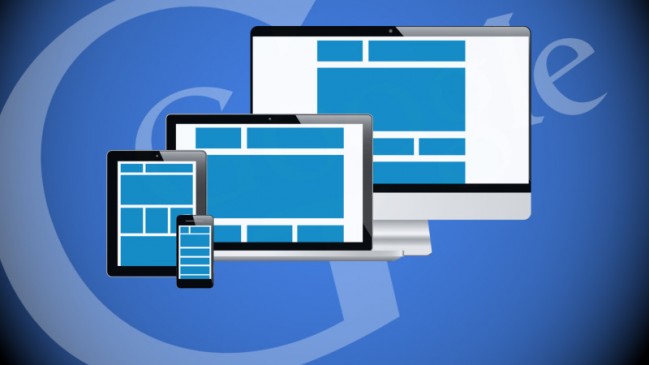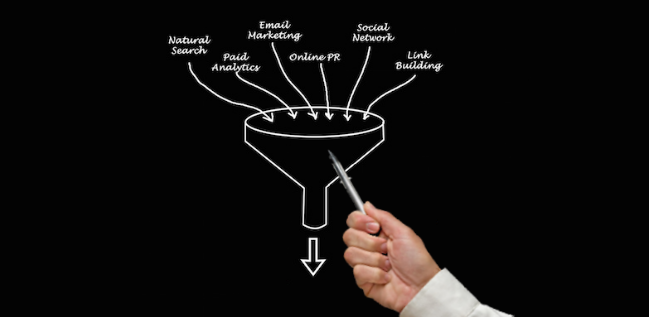When a survey asked the question “what comes to mind when you think about salesmen”, the most common answer was… “pushy”.
And I think it’s something we can all relate to. We’ve all seen the Carry On films and similar where someone (literally) sticks their foot in the door (and the laughter when the lady slams it on his poor toes).
But it’s a stereotype that’s come from somewhere and no one likes the thought of it being applied to them.
It’s bound to happen sometime, as sure as night follows day. You make a sale or carry out a service for client, and you think everything is fine. And then suddenly, out of the blue, comes a complaint, like an arrow suddenly slamming into your desk. You know you did a great job, you’re pretty sure the complainer is wrong, and you don’t want to feel you’re being taken advantage of. The big question is: what do you do?
If there’s one thing you should learn and take to heart when it comes to increasing profits in your business, it’s that email marketing works. If you use email marketing you’ll make more sales and make more money. It’s that simple. But (and it’s a big but) email marketing works only if you do it and do it regularly.
Here’s what I mean.
Have you ever had the experience of seeing a movie trailer and thinking “That looks great”, but when you actually go to see it you find it doesn’t amount to much? Flat characters, boring story, terrible acting, and you come away feeling bitterly disappointed. Or maybe you’ve sometime heard great things about a restaurant, perhaps by reading a review, and you went only to find the food was tasteless, the service awful and the prices much higher than the experience was worth.
There’s an old story about an advertising agency getting ready to pitch for the account with British Rail, the company which ran the UK railways before privatisation and which was famous for late-running and cancelled trains, filthy stations and awful food. The agency was a small one as these things go, and knew it would be pitching against some of the bigger firms, and so knew in turn it had to come up with a pitch to really grab the attention of the British rail management. And it came up with a corker.
One of the biggest mistakes I see businesses make time and again is to concentrate on getting more leads to the detriment of something just as, if not more, important.
They put a lot of effort into their lead-generation but then they miss out something so fundamental to marketing that, in many cases, almost all that effort goes to waste.
Here’s what I mean, and before you read this you’d better sit down, especially if you’re spending a good amount of money on lead-generation and you haven’t been making as much money as you’d like.
One of the problems with having a site ranking highly in the SERPs or being popular because of your activity and exposure on the various Social Media platforms is you get loads of traffic… but while it’s relevant to the overall theme of your site it’s not well matched in any specific way with your home page. In other words it’s trying to be all things to all visitors and so ends up being not particularly compelling for anyone.
Just recently I’ve been doing a lot of work with the new Gold Mastermind group, including looking at many of the Members’ websites — layout, design, content and so on. And while there are many simple mistakes I see over and over again, perhaps the least obvious to the untrained eye is in the content — specifically the copy. Now, copywriting isn’t the sexiest of topics and you’ll probably be glad to learn I’m not going to get into it deeply now. Because instead I want to look at the content from a different angle and talk about the style.
When we talk about sales conversions we tend to look at the whole idea of a “conversion” as being a single event.
But very often it simply isn’t that at all, and is in fact a more complex process involving at least two steps – and often many more. If you send an email for people to click on a link to visit a sales page and then click on a button to buy something, you have at least two steps – the sales letter, and then filling in the payment details on the shopping cart.
Most websites simply are not fit for purpose. They’re designed from the wrong premise, that the site needs to have a certain “look” that ties in with the company’s “brand”.
The correct premise is to first decide what you want the website to do. Once you have the answer to that, it will tell you what your site needs to look like to achieve its purpose.
Form follows function, after all. So here’s a simple seven-point checklist, to make sure you’re up to speed on the Internet Marketing basics.
If you’ve studied online marketing for any length of time you’ll have come across the phrase “squeeze page”, which sometimes goes by the name “opt-in page”. Whatever you call it, essentially the page has a simple purpose, and that’s to gather the contact details of prospective customers so you can follow-up with them.
Of late you’ll no doubt be aware I’ve quite forcefully been putting people off the idea of SEO and a very unhealthy reliance on so-called free traffic. While my arguments are sound and have been borne out over and over again, there’s still a lot of resistance to them from many, if not most, business owners.
There’s an old saying which goes: “You can’t have your cake and eat it”. In other words, you can’t use a resource and keep it at the same time, and it’s something business-owners are well aware of. Sell that unit of product, and it’s sold, never to be sold again. Use that money to buy new stock, and you can’t spend it on something else.
Spend money on refurbishing your office and you can’t spend the money on buying new stock. This is what economists refer to as “opportunity cost”.
One of the most common and powerful pieces of advice I give to business owners is to figure out the demographics of their top 20% of clients and then spend 80% of more of their time and marketing efforts to get more people just like that. It’s very simple, very straightforward, and it’s an almost guaranteed recipe for success. This 80/20 Rule is called the Pareto principle and i will show you how you can use it to your advantage.
Ask most business-owners what’s the most important thing in getting more customers, and you’ll get a massive range of answers. Some will say having a really good product — the best on the market if at all possible — is the best way to do it. Others will say having a really great website. Still others will say having a powerful lead-generation system in place. Most will say it’s a mixture of all the above, and more.
Direct mail is one of the most powerful ways to engage with your target market — especially your current and past customers and clients — yet it’s something few business owners are successful with.
You’re no doubt already aware one of the key principles of marketing is measuring and testing. After all, we can’t possibly know if our marketing efforts are bearing fruit unless we can measure the results of what we’re doing.
And once we’ve measured how effective a given strategy is, then it’s only a small step to take to start testing something different and measuring again.

























